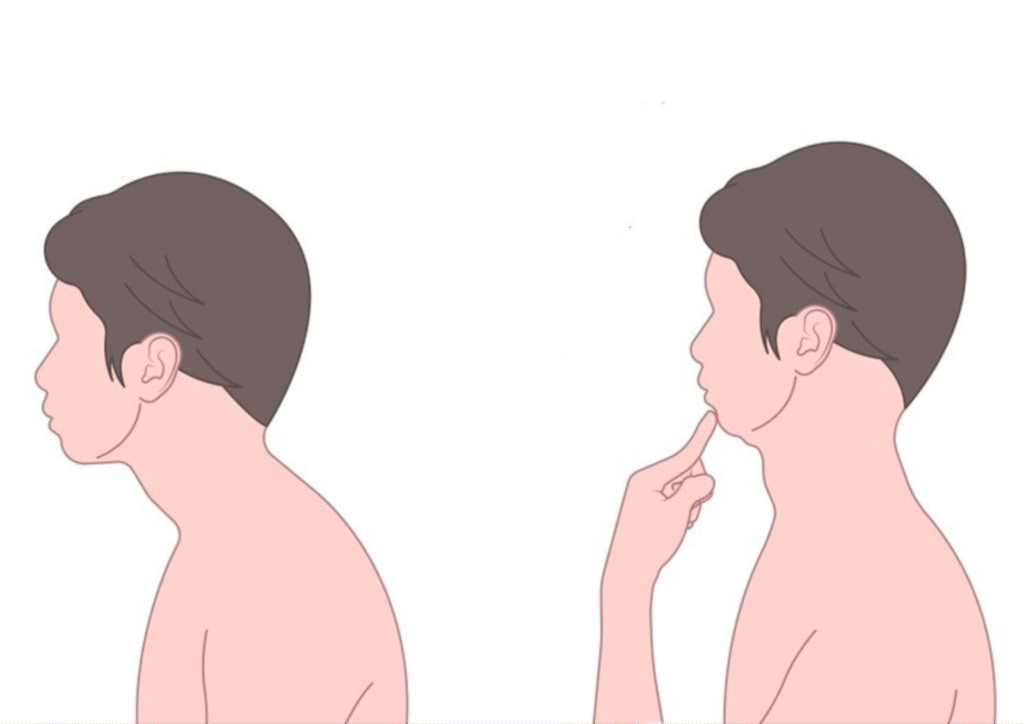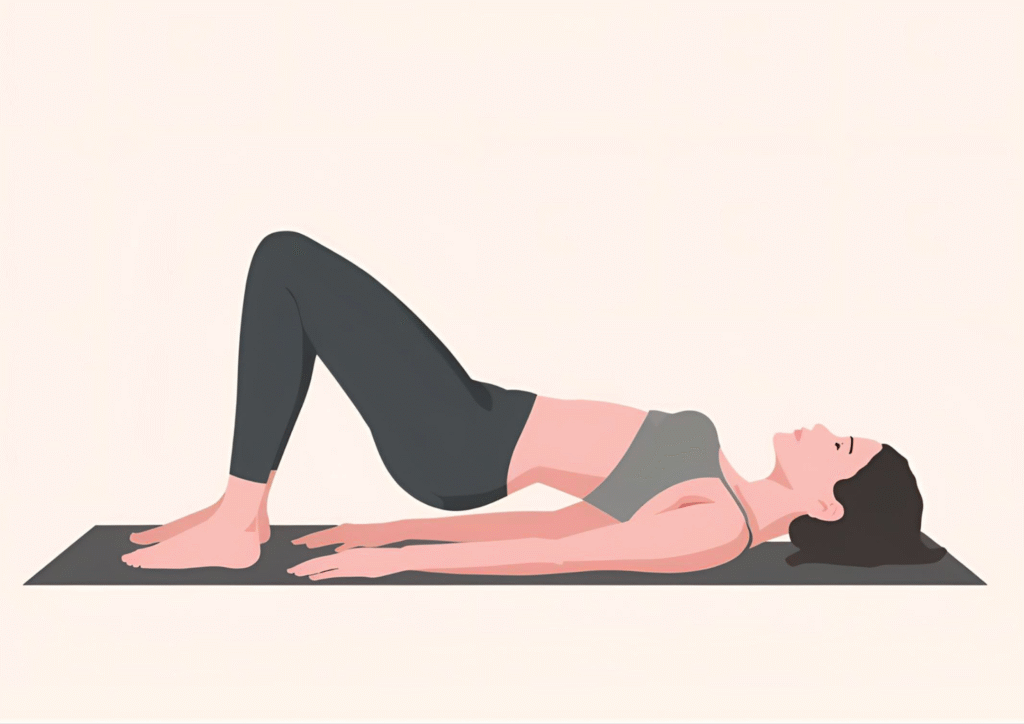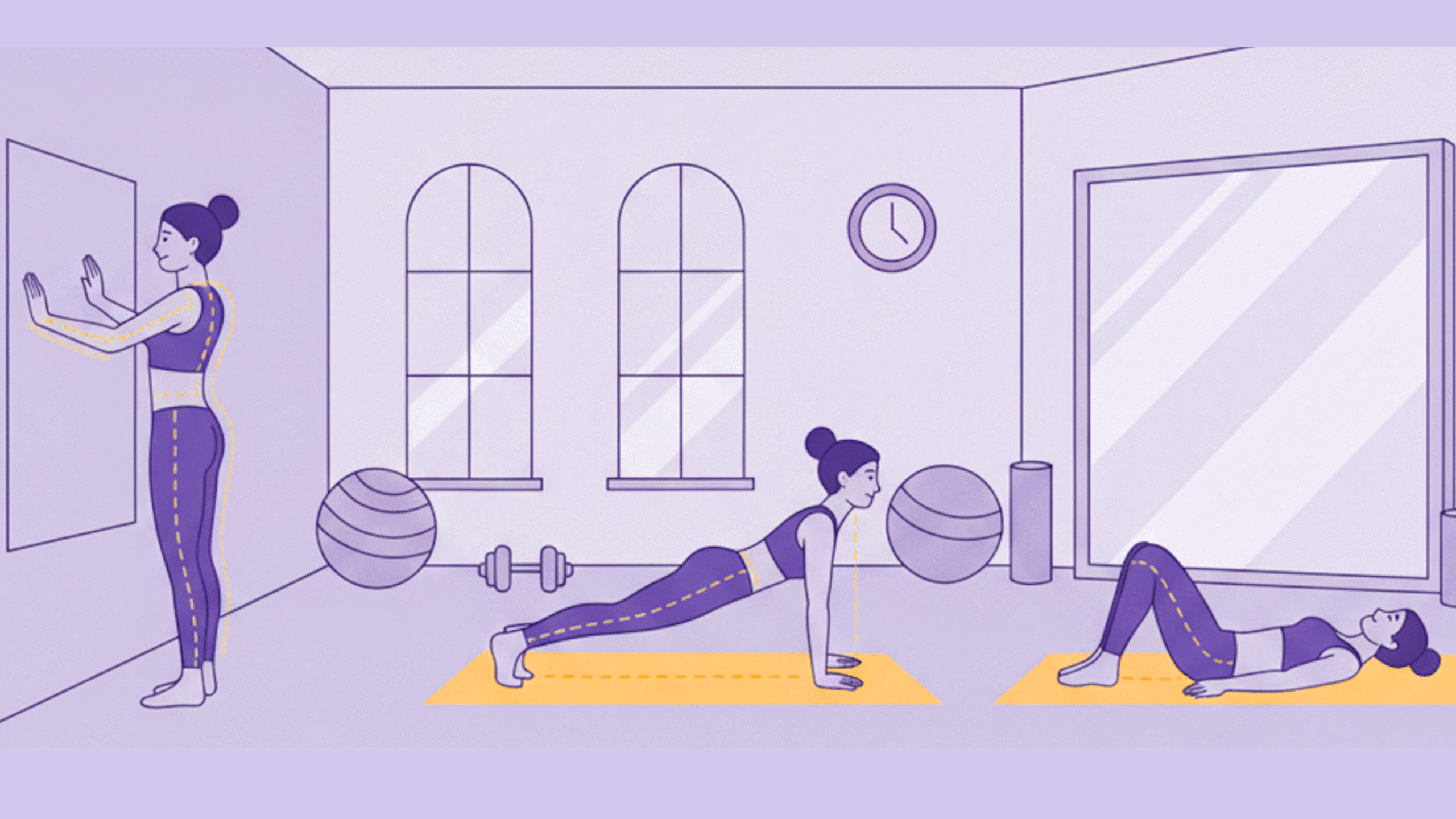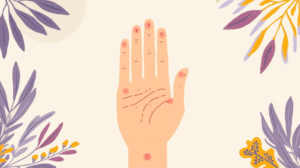You probably don’t think about your posture until your back starts screaming after a long day at work, right? We sit, we scroll, we slouch, and then suddenly, boom! neck pain, back stiffness, and even headaches arrive uninvited. The good news is that posture correction exercises can fix much of this discomfort if you know what to do and, more importantly, how to do it consistently.
This article isn’t just a list of random stretches. It’s a complete guide to help you understand better about good posture with practical, evidence-backed, and written with the everyday desk worker, student, or driver in mind. Think of it as your step-by-step roadmap to finally standing tall again.
Step 1: Identify Your Posture Problem Before Jumping Into Exercises
Before starting out any of the Posture Correction Exercise physically, you need to figure out what’s wrong with your posture in the first place. Otherwise, it’s like trying to fix a car without checking whether the actual problem is in the brakes, tires or an engine.
The Slouch Test: Quick Way to Check Rounded Shoulders
Stand naturally in front of a mirror. Are your palms facing backward instead of inward? Do your shoulders roll forward like you’re carrying invisible shopping bags? Congratulations, you might have rounded shoulders.
Wall Test for Head & Back Alignment
Stand with your feet, glutes, shoulders, and head against a wall. Can you comfortably touch all four points without straining? If not, your posture needs realignment.
Signs You Have Forward Head Posture or Tech Neck
If your head sticks out further than your chest when sitting at your desk, you’re probably living with forward head posture. This adds extra weight to your neck muscles and is a leading cause of migraines and upper back pain [1].
Why Does Self-Assessment Matters Before Training ?
Different posture problems require different correction exercises. For example, someone with tight chest muscles needs more stretching, while someone with weak glutes needs strengthening.
Step 2: Foundational Posture Correction Exercises
Now, let’s get into the action. These posture correction exercises form the foundation of your daily routine . Done regularly, they help realign your spine, strengthen weak muscles, and stretch the tight ones.
Chin Tucks:- for Tech Neck
A quick fix for hours of screen time, chin tucks help reset your neck alignment and fight that dreaded forward head slump.

How to do :-
- Sit down or stand upright.
- Slowly draw your chin straight back .
- Hold this position for 5 seconds, repeat 10 times.
This simple move strengthens deep neck flexors and reduces forward head posture [2].
Wall Angels :- Step-by-Step to Open Shoulders
Think of this as your posture rest button, perfect for undoing hours of hunching and opening up tight shoulders.

How to do :-
- Stand with your back flat against the wall.
- Bend your arms a lil and rest them against the wall in ‘L-shape’.
- Slowly glide your arms up and down while keeping your spine neutral.
This retrains your shoulders to stay open instead of collapsing forward.
Bird Dog:- Core + Spine Stability
A balance move that strengthens your core and spine so good posture feels natural.

How to do :-
- Get on all fours.
- Extend your right arm and left leg simultaneously.
- Hold for 5 seconds, switch sides.
This stabilizes your core and spine, making it easier to hold good posture throughout the day [3].
Bridges :- Glute & Lower Back Strengthening
A go-to move for waking up your glutes and supporting a healthier, upright spine.

How to do :-
- Lie on your back with knees bent.
- Lift your hips until your body forms a straight line.
- Hold for 3-5 seconds, repeat 12-15 times.
Strong glutes counteract the slouch caused by sitting.
Planks :- Core Stabilization Protocol
The ultimate core workout that builds stability and keeps your posture solid all day.

How to do :-
- Hold a forearm plank with a straight spine.
- Start with 20 seconds, build up to 60+.
Planks strengthen your entire core, the real engine behind posture [4].
Step 3 : Stretching, Undo the Tight Muscles That Pull You Forward
Strength is half the equation. The other half is stretching the muscles that are constantly yanking you into bad posture.
Chest Opener Stretch
Find a doorway, place your arms at a right angle, and gently lean forward. You’ll feel your chest expand and those desk-hunch muscles finally release.
Cat-Cow for Spinal Mobility
Place your body on all fours, flow between arching your back like a happy cow and rounding it like a stretching cat. It’s simple, soothing, and keeps your spine moving freely.
Upper Trap Stretch for Neck Relief
Sit up tall, tilt your head to the side, and use your hand for a gentle push. It’s like telling your neck, “Relax, you’ve carried enough today.”
Hip Flexor Stretch for Sitting-Induced Slouching
Drop into a low lunge with one knee on the floor and push your hips forward. This stretch undoes the tightness that long hours of sitting sneak into your hips.
10-Minute Daily Posture Routine for a Stronger Spine !
Here’s a protocol you can follow even during a busy day.
- Warm-Up (2 min): Cat-Cow, shoulder rolls.
- Strength (5 min): Chin tucks, wall angels, bird dog.
- Stretch (2 min): Chest opener, hip flexor stretch.
- Cool-Down (1 min): Deep breathing while standing tall.
That’s 10 minutes for a stronger spine.
Posture Exercises for Office Workers
Most of us spend hours in our offices sitting glued to a chair, which is basically a slow-motion disaster for posture. Here are some easy exercises you can do at your workplace :-
5-Minute Desk Reset Protocol
Every hour, do a round of shoulder rolls, wrist stretches, and 30 seconds of standing back extensions.
The 20-20-20 Eye & Neck Relief Protocol
Every 20 minutes, look 20 feet away for 20 seconds. It resets both your eyes and your neck.
Micro-Breaks That Take Less Than 60 Seconds
Even standing up for 30 seconds every half hour reduces spinal compression. Science says your back will thank you [5].
Posture Correction With Yoga
Yoga isn’t just about flexibility, it trains your body to move mindfully. Yoga combines flexibility and awareness, the two pillars of posture ! These simple poses help align your spine, open tight muscles, and make good posture feel natural :-
Mountain Pose: Stand Tall & Improve Posture
Stand tall with feet hip-width apart, shoulders back, chest lifted. Hold for 30 seconds, focusing on balance.
Cobra Pose: Counter Desk Slouching Effectively
Lie face down, place hands under shoulders, and lift your chest. Perfect for counteracting desk slouching.
Child’s Pose : Relax Your Spine & Reset Posture
Sit back on your heels, arms forward, forehead down. It stretches the spine gently.
Why Does Yoga Complement Strength Training?
Strength holds your posture in place. Yoga helps you feel it. Together, they make posture correction sustainable.
Simple Daily Habits to Improve and Maintain Your Posture
Ergonomic Setup – Give Your Spine a VIP Seat
Think of this as giving your spine a first-class upgrade at work or home. A few small tweaks make a big difference for your posture :
- Screen at eye level – No more peeking down at your laptop like it’s a secret diary. Keep your neck neutral and shoulders relaxed.
- Chair that supports your lower back – Your spine deserves a chair that hugs it in all the right places. A lumbar cushion can work wonders.
- Feet flat on the floor – Dangling feet are for kids on swings, not adults at a desk. Grounded feet promote balance and reduce strain.
Sleep Setup – Rest Your Spine Right!
Back or side sleeping works best. Use a medium-firm mattress and a pillow that keeps your head aligned with your spine, not tilted like you’re peeking over a wall [6].
Driving Setup – Stay Supported on the Road!
Adjust your car seat so your hips are on the level with your knees. Add a lumbar cushion if your lower back needs a backup.
Walking & Standing – Quick Posture Check!
Imagine a string gently lifting the top of your head. This simple mental cue keeps you tall, open, and free from slouching.
How Long Until You See Posture Improvement?
Short-Term Improvements (2–4 Weeks)
Expect less daily stiffness and a noticeable drop in aches. Small wins, but they add up.
Mid-Term Gains (6–8 Weeks)
You’ll start catching yourself standing taller, and posture photos actually show the difference.
Long-Term Structural Changes (3–6 Months)
Muscles and spine begin to realign for good, creating lasting strength and support [7]
Posture Correction Myths vs. Evidence-Based Protocols
- “Braces Fix Posture Overnight” – They’re a tool, not a solution. Overuse may even weaken muscles.
- “Good Posture Means Standing Rigid” – Nope. Healthy posture is relaxed, not military.
- “It’s Too Late to Improve After 40” – Research shows posture correction is possible at any age [8].
Your Personalized Posture Correction Roadmap
- Beginner Protocol: 5–10 min/day (Chin tucks, wall angels, chest stretches).
- Intermediate Protocol: 15–20 min/day (Add planks, bridges, yoga).
- Advanced Protocol: Lifestyle integration (ergonomics, gym training, consistent yoga).
Final Thoughts: Posture Is a Daily Practice, Not a Quick Fix!
Sure, exercises can help you improve your posture but only if you remain consistent . Think of posture like brushing your teeth, you don’t fix it once and forget about it. It’s daily practice. It’s also about social awareness: the way you sit, stand, and move, all these daily activities not only impact your health but also how confident and approachable you look to others.
Start small. A chin tuck here, a chest stretch there. Over time, these little daily investments add up to pain-free living and a spine that thanks you every single day.
Explore More Posture & Wellness Solutions
Want to take your posture game to the next level? Check out these helpful guides and tips to strengthen your spine, improve alignment, and reduce back, neck, and shoulder strain. From easy daily exercises to ergonomic hacks, these resources make standing tall feel effortless:
- Simple Posture Exercises to Fix Slouching and Neck Strain
- Posture Correction Belts vs Posture Braces: Which Works Best?
- How to Reduce Back Pain While Sitting at Home or Work
- Can a Posture Corrector Belt Help Athletes to Recover?
💡 Pro Tip: Combine these exercises and ergonomic solutions with mindful daily habits for lasting improvements in posture and overall well-being.
Frequently Asked Questions:
1. What is the best daily protocol for posture correction at home?
A 10-minute routine combining chin tucks, wall angels, bird dog, and chest stretches is highly effective.
2. How long do posture correction exercises take to show results?
Most people notice improvements in 2–4 weeks, with major changes in 2–3 months.
3. Do I need equipment for posture exercises or can I start at home?
No equipment needed. A wall, mat, and a chair are enough.
4. Are posture correction belts a part of any effective protocol?
They can support posture temporarily but should never replace exercises.
5. What’s the best posture protocol for office workers?
The 20-20-20 rule, desk stretches, and micro-breaks.
6. Can posture correction exercises help with back pain relief?
Yes, by strengthening supportive muscles and improving spinal alignment
References
- Nejati, P. et al. (2016). The relationship of forward head posture and cervical muscle performance in adolescents. Journal of Physical Therapy Science.PMC
- Harman, K. et al. (2005). Clinical effectiveness of physiotherapy in reducing forward head posture. Manual Therapy.J-STAGE
- Kavcic, N. et al. (2004). Biomechanical model of bird-dog exercise. Clinical Biomechanics. PubMed
- Ekstrom, R. A. et al. (2007). Muscle activation during core stabilization exercises. Journal of Strength and Conditioning Research.PubMed
- Dunstan, D. et al. (2012). Too much sitting – a health hazard. Diabetologia.PubMed
- Radwan, A. et al. (2015). The relationship between sleep posture and spinal symptoms. Journal of Chiropractic Medicine.PMC
- Kim, S. Y., et al. (2015). Effect of exercise on forward head posture and respiratory function. Journal of Physical Therapy Science.http://www.kptjournal.org/journal/view.html?doi=10.18857/jkpt.2019.31.6.351
- Katzman, W. B. et al. (2017). Posture, kyphosis, and exercises in older adults. Osteoporosis International.PubMed
- Czaprowski, D. et al. (2018). Conservative treatment of postural defects in children and adults. Ortopedia Traumatologia Rehabilitacja.PMC























